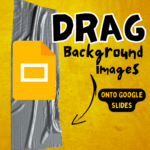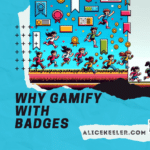
3 Ways to Publish Student-Centered Writing
Guest Post by Shaelynn Farnsworth
Technology affords students the opportunity to demonstrate their understanding in a multitude of ways. A student-centered writing classroom aims to move all writers forward and provides choice throughout the writing process. One important way for students to have ownership in their message is providing choice in the mode in which their ideas are communicated. In a traditional classroom, unimodal modes of communication are commonplace, unlike a technology ubiquitous learning environment in which writing comes in many forms of multimodal communication. Publishing and sharing are uniquely dependent upon the student’s choice.
In my classroom, students used a variety of modes to publish and share their writing and message with an audience beyond the classroom. The following are 3 unique ways to consider, along with technology integration to support:
1. Multimedia Video Production
Digital Storytelling is the demonstration of ideas through the use of images, video, audio, and text. One of my students’ favorite ways to demonstrate their understanding of a concept was through video creation. Blending the elements of writing, designing, creating, and self publishing; rich minilessons, targeted at literacy standards, helped scaffold the learning of how to make their message come alive. YouTube Editor is an option to explore. Upload, edit, add transitions, audio, and text to create a multimedia demonstration of knowledge. YouTube videos can be public, unlisted, and even made private. Bonus, if your school uses GAFE, then YouTube channels are automatically attached to student and teacher accounts.
2. Virtual Tour –
Deepen content knowledge and student understanding of people, places, and cultures through the use of virtual tours. Access to technology has made it possible for students to explore the globe, virtually, and develop an understanding in geography, culture, and people without being limited by location or travel experience. Two of my favorite Google resources that students have used to share their learning with others are My Maps and Google Earth . My students also enjoyed using Minecraft as a virtual tour creator to construct and share their knowledge. Using a screen capture tool allowed them to capture, annotate, and publish their “tours” to a wider audience. Here is a former student explaining his understanding of Egypt through Minecraft!

3. Screenplay
When a student demonstrates their current understanding in a nontraditional mode, it forces the brain to think differently by connecting thinking to an authentic situation and then communicating it through a different text type. Collaborative screenwriting helps students develop characters, actions, and settings to support the message they wish to communicate with their intended audience. By limiting space (prose) in which students can write, at length, their understanding of ideas to a smaller space (drama) which values succinct dialogue and text, enhanced by setting and action; screenwriting supports students who enjoy exploring social and imaginative modes. Collaborative screenwriting can be supported through the use of YouMeScript or Story Charts . Along with actually performing their screenplay and publishing via video, two great alternatives to consider are Storyboard That and Google Story Builder. Here is an example of a Romeo and Juliet Remix using Story Builder.

Traditional text, although still widely used, should not be the only option in which students are able to demonstrate their understanding. In a student-centered writing classroom, technology access invites student to consider multiple ways to communicate their message, analyze and evaluate different modes, and finally create authentic communication for a public audience!
| Shaelynn is a School Improvement Consultant in the state of Iowa with an emphasis on Literacy, Technology, and AIW (Authentic Intellectual Work). Previously, she taught English for thirteen years in a 1 to 1 district. Shaelynn is a learner, trainer, blogger, and a gentle disruptor. She is a champion for student voice, equipping learners with skills necessary to advocate for themselves and others, and inspiring educators to reimagine teaching and learning! Shaelynn is a Google Certified Innovator, AIW Lead Coach,and has training in PBL from the Buck Institute, Lucy Calkins Writing and Reading Workshop, Jim Knight Instructional Coaching and Dianne Sweeney Student-Centered Coaching, and 1 to 1 Implementation. Connect with Shaelynn on Twitter, G+, or through her |







